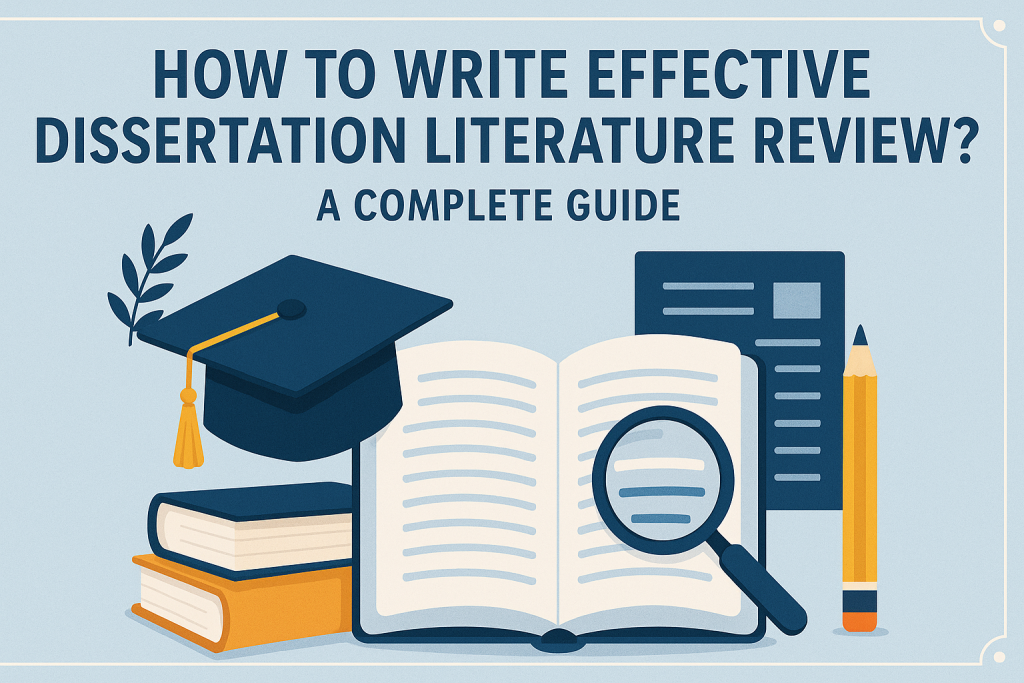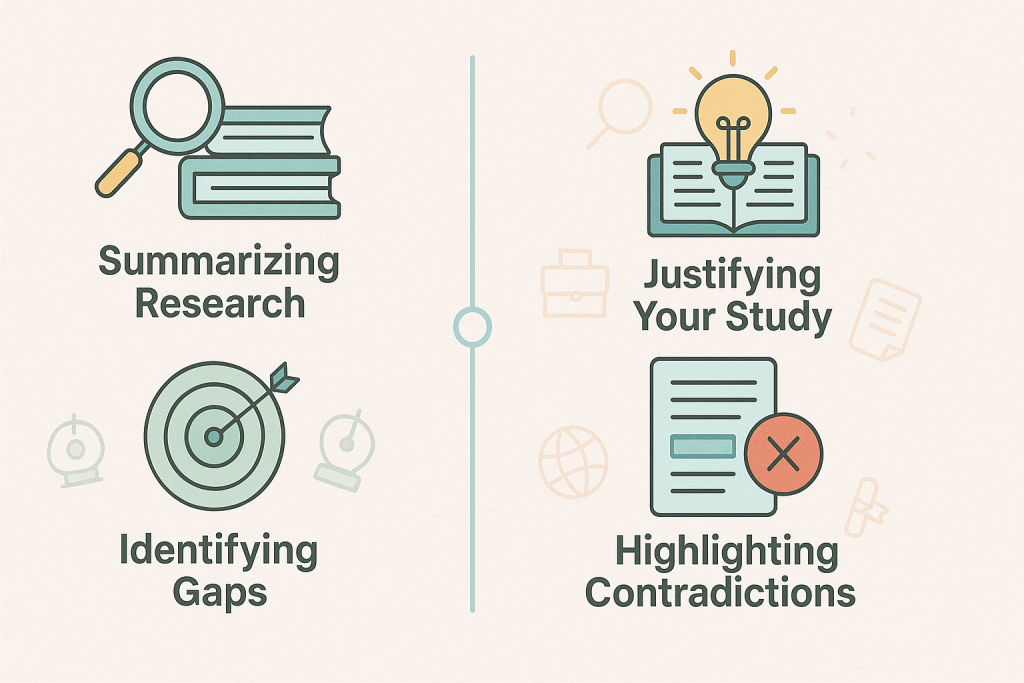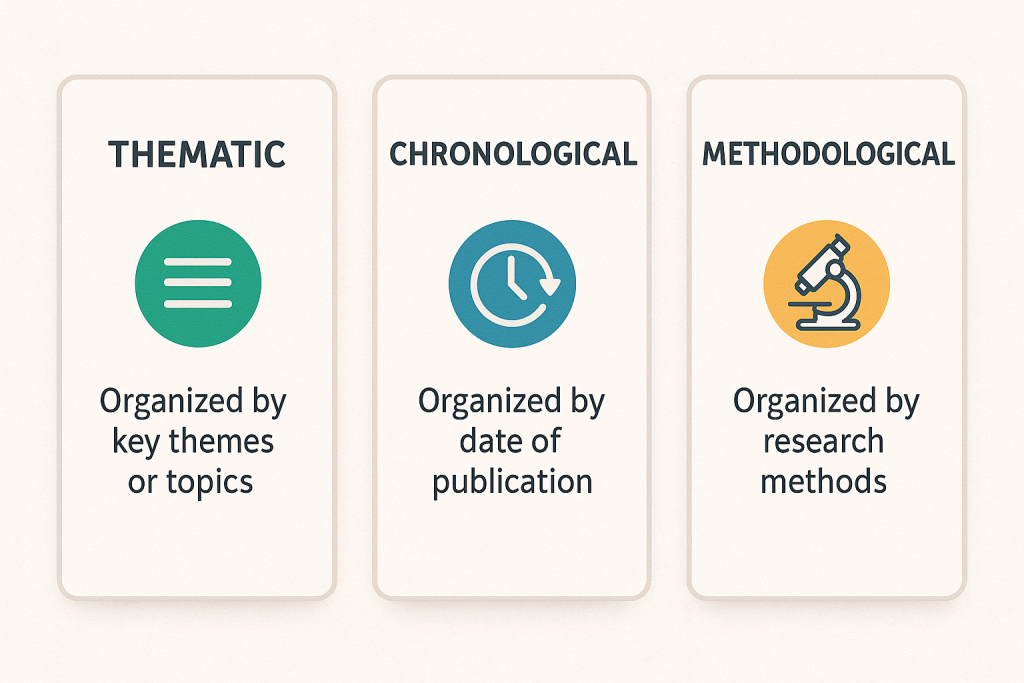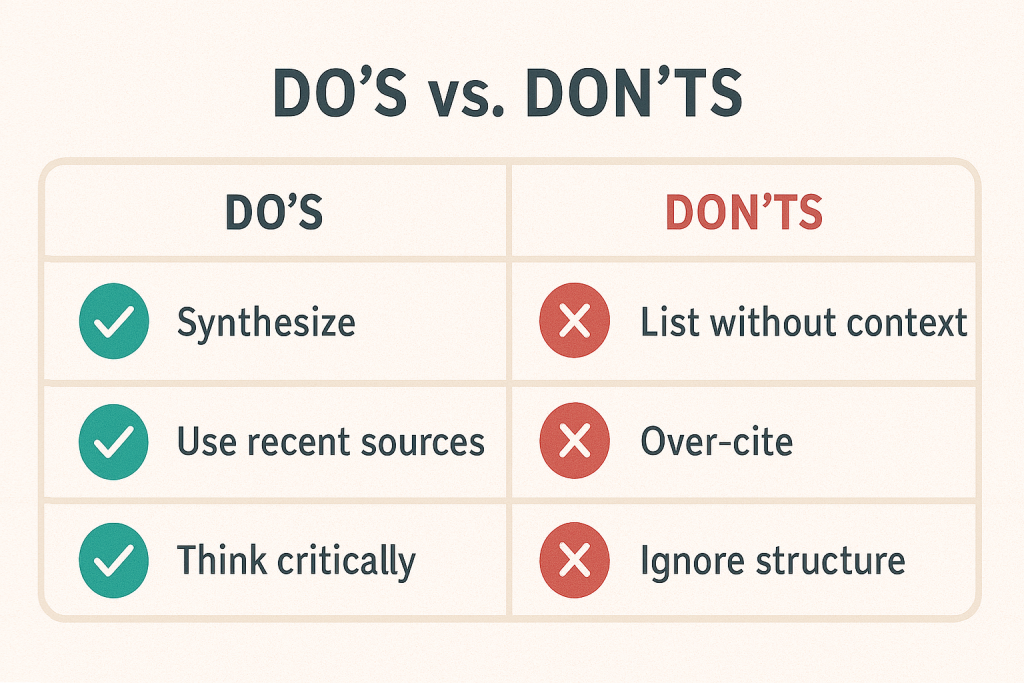How To Write Effective Dissertation Literature Review? A Complete Guide
Writing a dissertation can be one of the most demanding tasks in your academic journey. Among its many sections, the dissertation literature review plays a critical role in shaping the direction and credibility of your work. But what exactly is a dissertation literature review? Simply put, it’s the section where you explore and evaluate existing research connected to your topic. You identify what has already been studied, what gaps still remain, and how your own academic research contributes to the field.
A high-quality dissertation literature review demonstrates that you’ve thoroughly reviewed existing academic material. It acts as the backbone of your study, helping you create a strong foundation upon which your research paper or thesis is built. Without a well-structured dissertation literature review, your dissertation project can feel disconnected or lacking in direction. In this comprehensive guide from finewriters.co.uk, you’ll learn the importance of a dissertation literature review, how to write one effectively, and how to avoid common mistakes—step by step.

What Is a Literature Review in a Dissertation?
A dissertation literature review is a carefully written section of a dissertation where you explore, assess, and discuss the existing academic research on your chosen topic. Unlike an annotated bibliography or a list of summaries, a dissertation literature review is analytical and argumentative.
It aims to highlight:
- What has already been studied in your research area
- What gaps or controversies exist
- How your research fills those gaps or adds new insight
- The dissertation literature review is not just informative, it’s foundational.
It sets the stage for your research question, helps justify your research methodology, and proves that your study is necessary and timely.
Steps to Writing an Effective Dissertation Literature Review

Writing a dissertation literature review doesn’t have to feel overwhelming. By following a structured approach, you can create a detailed, well-organized, and insightful review. Here’s a step-by-step guide to help you write a dissertation literature review that adds real value to your dissertation research.
Step 1: Clarify Your Research Question or Objective
Before diving into sources, ensure you have a clearly defined research question or aim. This is the compass that will guide your entire dissertation literature review.
Ask yourself:
- What is the core problem or question your dissertation addresses?
- What are the key themes, variables, or theories involved?
Having this clarity helps you filter through relevant literature and avoid going off-track.
Step 2: Conduct a Comprehensive Literature Search
Use academic databases and search engines such as Google Scholar, JSTOR, PubMed, Scopus, and your university’s library portal. Search strategically using combinations of keywords, synonyms, and Boolean operators (AND, OR, NOT). Make use of reference management tools like Zotero, Mendeley, or EndNote to save, organize, and cite your sources efficiently. Keep track of what you read and your thoughts on each source to build a solid dissertation literature review.
Step 3: Set Inclusion and Exclusion Criteria
Determine which studies are relevant and credible by setting clear criteria:
- Inclusion: Peer-reviewed, published within the last 5–10 years, directly related to your topic or methodology.
- Exclusion: Outdated, non-academic, tangential topics.
This process helps in maintaining a sharp focus and high quality of sources for your dissertation literature review.
Step 4: Read and Evaluate Sources Critically
- Don’t just read for content—read with purpose.
- As you go through each source, evaluate:
- What is the author’s main argument?
- What methodology did they use?
- What were the key findings and conclusions?
- Are there limitations, gaps, or contradictions?
Take detailed notes and categorize your sources based on emerging themes or theoretical approaches, ensuring they contribute meaningfully to your dissertation literature review.
Step 5: Identify Themes, Patterns, and Gaps
- Start grouping your literature into thematic categories such as:
- Key theories or conceptual frameworks
- Methodological approaches
- Chronological development of the field
- Areas of agreement, debate, or contradiction
Look for patterns in findings or conclusions across sources. Most importantly, identify where gaps or under-researched areas lie—these often form the basis for your dissertation literature review contribution.
Step 6: Develop a Literature Review Structure

Decide how to organize your dissertation literature review. Common structures include:
- Thematic: Organized by topic or theme.
- Chronological: Traces the development of ideas over time.
- Methodological: Focused on how research has been conducted in your field.
Choose a structure that best suits your research and helps logically build up to your research question.
Step 7: Write the Review—Synthesize, Don’t Summarize
When you begin writing:
- Integrate studies by comparing and contrasting them.
- Discuss trends or shifts in understanding.
- Highlight key contributions and where consensus or conflict exists.
- Show how your study fits in—what new questions it raises or gaps it addresses.
Use your own analytical voice to guide the reader through the academic conversation, reinforcing the value of your dissertation literature review.
Step 8: Use Clear and Consistent Headings
Break your review into sections with clear headings that align with your chosen structure. This improves readability and helps readers follow your line of argument throughout your dissertation literature review. Include transitions between sections to ensure smooth flow and cohesion.
Step 9: Reference Properly and Avoid Plagiarism
Use your institution’s required referencing style—APA, MLA, Harvard, or Chicago. Paraphrase carefully and cite all sources. Use plagiarism checkers like Turnitin or Grammarly Premium to ensure originality in your dissertation literature review.
Step 10: Revise and Seek Feedback
Editing is just as important as writing. Review your dissertation literature review for:
- Clarity and coherence
- Proper structure and logical flow
- Grammar and style issues
- Completeness and relevance of references
- Ask your supervisor or a peer to provide feedback. Fresh perspectives can catch issues you’ve missed.
Step 11: Final Checks Before Submission
Before finalizing:
- Ensure every section ties back to your research question.
- Double-check formatting, citations, and transitions.
- Confirm that you’ve highlighted the significance of your study within the context of existing literature.
Why Is the Literature Review Important in a Dissertation?
One of the crucial sections of your dissertation is the dissertation literature review. It justifies the academic context of your research. It demonstrates that you are knowledgeable, and that your dissertation study has credible, scholarly sources underpinning it. This adds value to your doctoral writing and fulfills the requirements of the research objectives.
By outlining prior works, the dissertation literature review assists in achieving defined research goals. It demonstrates milestones accomplished in the field and reveals the gaps that your dissertation thesis intends to fulfill. It is important for persuading the audience—especially the dissertation supervisor or the committee members, about the importance and uniqueness of the study. Additionally, an exhaustive dissertation literature review can assist in preventing you from undertaking redundant work. Rather than repeating past studies, you will be able to advance the discourse in new ways.
Types of Literature Reviews
When writing a dissertation literature review, you may adopt different types or combinations based on your research goals:
- Narrative Literature Review The most common type, where you describe and interpret previous research thematically or chronologically.
- Systematic Literature Review A rigorous and methodical process of reviewing all available literature based on specific inclusion/exclusion criteria. Often used in scientific or healthcare dissertations.
- Scoping Review A broader exploration is used to map the available literature and identify key concepts or knowledge gaps without evaluating the quality in detail.
- Meta-analysis / Meta-synthesis Quantitative (meta-analysis) or qualitative (meta-synthesis) approaches used to combine results from multiple studies and draw new conclusions.
Understanding these types helps you align your dissertation literature review approach with the needs of your dissertation.
Goals of a Dissertation Literature Review
- A successful dissertation literature review should:
- Showcase your knowledge of key theories, debates, and findings in your area
- Identify gaps in the existing literature that your dissertation will address
- Place your research within a scholarly context
- Support your methodology by referencing how similar research has been conducted
- Highlight contradictions and differing perspectives to argue for your study’s relevance
- Build a logical bridge between existing studies and your research objectives
Common Mistakes in Literature Reviews

- Avoid these pitfalls in your dissertation literature review:
- Listing without synthesis: Don’t just describe each study—connect them.
- Outdated sources: Use recent, relevant academic material.
- Lack of critical thinking: Show your voice by evaluating studies, not just repeating them.
- Poor structure: Organize ideas logically with smooth transitions.
- Overloading citations: Focus on quality over quantity; cite what’s most relevant.
- Plagiarism: Always paraphrase and cite properly using the appropriate academic style.
Tips for a High-Quality Dissertation Literature Review
Writing a dissertation can feel like climbing a mountain—but your dissertation literature review is the sturdy path that gets you closer to the summit. It’s not just a summary of what others have said; it’s your chance to show you understand the field, where your research fits, and how you’re building on existing knowledge. A strong dissertation literature review can make a powerful impression. Here’s how to do it right.
- Keep Your Research Question Front and Center: As you dive into articles, books, and journals, don’t lose sight of your core research aim. Every source you include should help answer your research question or support your central theme. It’s easy to get sidetracked, but staying focused ensures your dissertation literature review stays relevant and purposeful.
- Don’t Just Summarize—Synthesize: Instead of simply listing what each source says, bring them into conversation with each other. Which authors agree? Who disagrees? Are there unique angles or emerging trends? Synthesis helps you show a deep understanding of the topic and allows your voice to shine through.
- Use Quotes Wisely Quoting: directly from a source can be powerful—but do it sparingly. Too many quotes can make it seem like you’re relying on others to do the talking. Paraphrasing, on the other hand, shows that you truly grasp the material and can explain it in your own words.
- Make It Visual: A wall of text can overwhelm readers. Break up complex information with helpful visuals—tables, concept maps, or diagrams. These tools can highlight themes, patterns, or gaps and make your dissertation literature review easier to digest.
- Structure Matters: Think of your dissertation literature review as a journey. Use clear headings to show where you’re going, and smooth transitions to guide readers along the way. A well-structured review feels cohesive and professional, helping your audience stay engaged.
- Mind Your Tone: In your writing, try to convey logical academic work, which does not mean that it needs to be tedious. Your tone should be formal but not hard to read. Do not use jargon unless absolutely unavoidable, and if so, then break down complex concepts simply.
- Cite Everything:, Always Referencing is not merely about avoiding plagiarism; it is also about bestowing recognition and enhancing one’s credibility. Respect the citation format dictated by the university or department one belongs to, be it APA, MLA, Harvard, or otherwise, and ensure each source is checked.
- Edit like a Pro: No one ever gets the first draft right. Spend some time editing your work by checking for grammar issues, repetition, unclear sentences, and format. A polished dissertation literature review should be readable without any complications and showcase detail orientation.
- Get Feedback: After spending so much time sitting over a review, the work needs the attention of another person. Ask an advisor or colleague for peer review. Their comments ought to help you not only refine your arguments but also make your points more straightforward.
- Final Thoughts: Dissertation literature review is more than being an academic burden; it depicts the extent of understanding one has for a certain topic with a well-structured argument and reasoning while showing that a researcher has spent reasonable effort into it. Focused structuring alongside thoughtful writing can help craft a review that complements the dissertation.
- Keep your research question in focus throughout your reading and writing.
- Use direct quotes sparingly—paraphrasing shows better understanding.
- Integrate sources—compare authors who agree, disagree, or offer unique viewpoints.
- Use visuals like tables, diagrams, or concept maps to support synthesis.
- Revise and proofread to eliminate repetition, grammar errors, or unclear phrasing.
- Ask for feedback from your advisor or peers.
To ensure your dissertation literature review is polished and professional, keep the following tips in mind:
- Stay focused on your research aim.
- Use clear headings and logical transitions to guide readers.
- Write in a professional yet readable tone that reflects strong academic writing.
- Cite every source properly using the required citation style (APA, MLA, Harvard, etc.).
- Revise thoroughly to make sure your review is cohesive and free from grammatical errors.
A high-quality dissertation literature review not only supports your research but also demonstrates your competence as a scholar.
Tools and Resources for Writing a Literature Review
- Reference Management: Zotero, EndNote, Mendeley
- Database Access: Google Scholar, JSTOR, Scopus, PubMed
- Plagiarism Checkers: Turnitin, Grammarly, Quillbot
- Academic Writing Support: Purdue OWL, Scribbr, ResearchGate
- Synthesis Tools: Litmaps, Connected Papers, Research Rabbit
Conclusion
A dissertation literature review is more than a synopsis—it is an academic task that, in itself, is your foundation for the entire dissertation work. It enables understanding of the discipline, situates the research in relation to existing literature, and demonstrates the contribution of the research. Choosing sources with care, classifying them systematically, looking for and interpreting patterns, and communicating the results in an appropriate manner all contribute towards the success of the academic paper.
If you are writing an undergraduate dissertation or a postgraduate thesis, how you approach your dissertation literature review will decide how successful your research will be. Start working on it step by step and bear in mind: as the quality of the dissertation literature review increases, so does the quality of the dissertation.
